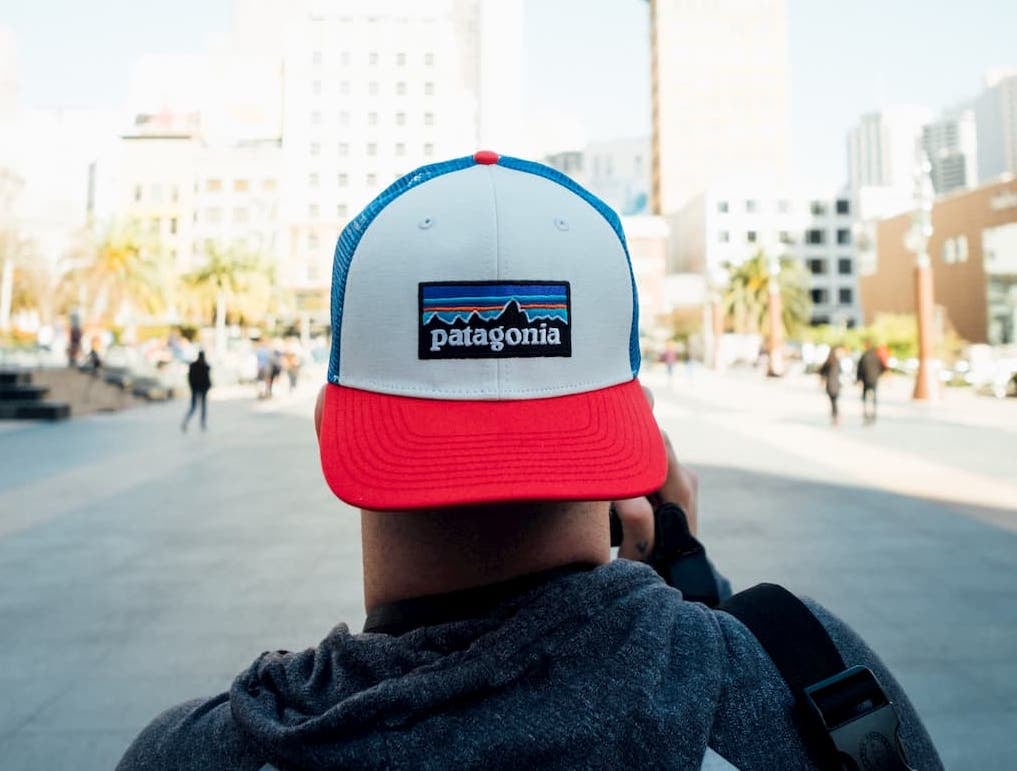In the age of a 24-hour news cycle and ubiquitous social media, we’re all wide-awake to society’s social, economic, and environmental ills.
That means at any given moment, your customers may be lamenting childhood hunger, gender inequity, contaminated drinking water, threats to treasured national monuments, or any one of dozens of other pressing issues.
What does that have to do with your Shopify store? Excellent question.
Better Add Some Values to Those Values
While quality, price, and your store’s dreamy UX are on consumers’ minds as they shop for the latest must-have device, shoe, or snack, gone are the days when customers were good with their fave brands just selling stuff and stacking cash.

Cool products and service offerings, sweet deals, slick graphics, and easy checkout? Yes, please. But while you’re at it, we want to see some heart, damnit. (Don’t try to fake it, either--we’re too woke for that.)
To wit:
Thanks to omnipresent social media and near-unprecedented levels of activism across demographics, social consciousness is no longer exclusive to the enlightened Millennial or hybrid-loving consumer. (Source)
86% of consumers believe that companies should take a stand for social issues, and 64% of those who said it’s ‘extremely important’ for a company to take a stand on a social issue said they were ‘very likely’ to purchase a product based on that commitment. (Source)
How big a deal is it for your brand to have a purpose that serves the greater good? Really big.
With gratitude to Engage For Good, here’s a small sampling of consumer attitudes by the numbers:
→ 72% of Americans say they feel it is more important than ever that the companies they buy from reflect their values.
→ 76% say supporting companies that are addressing social and environmental issues helps them feel they are doing their part.
→ 86% of consumers say they’re likely to purchase from purpose-driven companies.” (Source)
→ “73% of respondents believe that a company can take actions that both increase profits and improve conditions in communities where it operates.” (Source)
→ “One-third of all consumers will stop buying their preferred products if they lose trust in the brand...” (Source)
There’s much more data out there (by all means, find it here), but you get the picture. It’s a purpose-driven world out there, and businesses should take notice.
One more thing that bears mentioning: purpose and mission are different animals, and you’ll run into trouble if you conflate them. Your mission is what you do; your purpose is the “why.”
Cause Marketing - A Primer
Once you’ve carefully considered and clarified your company’s compelling purpose (say that ten times fast), then and only then, you’re ready to take the next step. Why the wait? Because, warns Jack Neff of AdAge:
“If it starts in marketing, stays in marketing, becomes a slogan, a tagline, a nice campaign, it’s going to die.” (Ol’ Neff is not to be trifled with.)
Cause marketing (and the purpose that drives it) must infiltrate every department and be embraced by every team member. This is not just another marketing campaign--and if you look at it that way, it’s not going to be effective.
Cause marketing is a partnership between a for-profit company and a nonprofit organization for the benefit of both.
When well-executed, it becomes a visible and potent expression of a company’s transcendent purpose and a straightforward way to facilitate positive change in the world.
What’s In It For You? Oh, just oodles.
- A boost in brand differentiation and loyalty, which leads to →
- Increased revenue
- Greater exposure via customer advocacy and press
- Increased employee engagement and job satisfaction
- An uptick in high-quality job applicants
No matter the scale at which you employ a cause marketing strategy, if you plan and execute wisely, you’ll be rewarded. For the sake of demonstration, though, let’s go right to the top.
Now We’re Up In the Big Leagues
That’s a First… Lady
Though hardly the original architect of cause marketing, American Express is credited with naming -- and revolutionizing -- the strategy, coining the term in 1986 to describe its ambitious campaign to generate funding for the Statue of Liberty restoration project.

Linking arms with the Lady in the Harbor turned out to be a very, very good idea for all concerned. After a single quarter in which Amex donated $.01 of every purchase transacted with its card, the campaign raised over $1.7M for the restoration fund and card use increased nearly 30%.
In case you’re wondering, they didn’t stop there. You may have heard of a more recent cause marketing venture for Amex -- Small Business Saturday.
This Lather Don’t Quit
You’d have to live under a rock (under another rock) to miss Dove’s epically successful Campaign for Real Beauty. The campaign, now in its 16th year, set out to blast narrow and damaging portrayals of feminine beauty propagated by the beauty industry. With the exception of a heavily-criticized fumble back in 2011, it’s gone nowhere but up, transforming the formerly ho-hum brand into an A-Listed, award-winning powerhouse.
Today, among other endeavors, Dove continues their deep dive into cause marketing with The Crown Coalition (an organization dedicated to the celebration of Black hair) and works with parents and mentors, schools, and others via The Dove Self-Esteem Project.
One takeaway from Dove’s overall success with cause marketing? Leverage the Internet for all it’s worth. Their 2013 Real Beauty Sketches campaign video almost immediately became the most-watched video ad of all time.
Brilliant, Like Your Face Through These Amazing Lenses
Warby Parker, a brand Entrepreneur Magazine has called “one of the hottest socially conscious businesses around,” touched down in 2010 as an online retailer that put trendy, affordable eyeglasses within reach of Millennials everywhere.
In partnership with nonprofit VisionSpring, the B-Corp has donated over a million pairs of prescription eyeglasses to recipients in developing countries. The bespectacled folk at Warby Parker even took it one step farther, expanding on the “buy one, give one” model by contributing to business development as well.
Now at a (very) youthful ten years old, the B-Corp boasts 123 brick and mortar stores in the U.S. and Canada, has ventured into the contacts business with its new brand, Scout, and, according to Forbes, is currently valued at $1.7B.
Its mission statement? “Warby Parker was founded with a rebellious spirit and a lofty objective: to offer designer eyewear at a revolutionary price, while leading the way for socially conscious businesses.” Copy that, WP.
(Sidebar: in a 2017 interview with Inc. Magazine, co-founder Neil Blumenthal recalled, “We got a lot of advice from people that said, 'You guys are crazy, this is never going to work; if this was a good idea it would have existed already.’” How do ya like them apples, killjoys?)
Earth Day, Errday
Others might use cause marketing (even with great success), but Patagonia lives and breathes it. Since conception in 1973, the adventure apparel retailer has earnestly searched for ways to sell less while remaining profitable and--more importantly--impactful.
Patagonia has rebelliously (with a wink and a smile) driven a few stakes into the heart of American consumerism over the years. Perhaps the most memorable is their 2011 Don’t Buy This Jacket ad, which filled a full page in the New York Times and detailed the environmental impact of the production of their best selling fleece sweater. The clincher? It ran during the Thanksgiving season, flipping quite the bird to eager Black Friday enthusiasts.
The ad encouraged customers to abstain from making new Patagonia purchases, and instead Reduce, Repair, Reuse, and Recycle their well-loved Patagonia items.
The results were paradoxical. Presumably, Patagonia would have been happy to see their sales decrease, but that’s not what happened. Their reported revenue increased by 30% in 2012. (Source)
Patagonia’s edge isn’t some genius tree-hugging marketing exec; it’s authenticity. Founder Yvon Chouinard didn’t set out to make clothes his life’s work, but rather to stand on mountains and shed unignorable light on the important stuff. That has never wavered.

The point? People like clothes, but clothes are replicable. They’ll remain loyal to an authentic, unshakeable mission.
Let’s Talk About You
From Nike to Microsoft and (way, way) beyond, cause marketing success stories abound among big-name retailers and brands. But what do they have in common (besides all that money), and how does it apply to mere mortals--aka, online Shopify retailers?
Your store doesn’t have to be rolling in dough to make good things happen in the world. Though the scope of your campaign might not deliver the same numbers as corporate giants like Starbucks, there are fundamental considerations that apply to everyone equally. (Don’t forget the starfish parable, either.)
Know what you have to work with
Before you can choose a project that will meet your goals and be manageable long-term, you’ll need to determine your budget. First, look at your profit margins across your product catalogs. Where can you afford to give up a little? Is it company-wide, or restricted only to a specific collection or product?
If you’re interested in a monetary donation, you’ll also have to decide how that's going to be processed. Will you pursue a flat donation scheme like that supported by 1% for the Planet? Or will you do quarterly or monthly donations? Arrive at a viable monthly amount and keep it in mind as you explore your options. Establishing a realistic budget from the beginning will save you time and frustration down the road.
If a cash donation model won’t work for you, think of how else you can give back--free products? Sponsorship? Think creatively (and keep reading for more ideas.)
Keep it consistent
Make it easy for consumers to see the connection between your company and the cause or nonprofit you support. If you're an outdoor apparel retailer like Patagonia, whose customers are all about the great outdoors, leading the charge for environmental protections makes sense to everyone.
If you’re a gigantic fried chicken chain like KFC leading the charge for breast cancer research, you may end up writing a fat check, but you and your nonprofit partner may also leave a lot of people questioning your motives -- and not a little pissed off.
Give the people what they want
How can you be sure you’ll choose a partnership your customers will get behind? If your company has its finger on the pulse of its culture and your customers, you may already know.
If not, take a poll. (Or take a poll anyway. Why not?) Toss out a killer hashtag on IG and Twitter and invite followers to weigh in on what issues matter most to them. Create an employee survey and ask for participation across departments.

Choosing a cause or nonprofit consistent with your company’s values -- and one you personally believe in -- is critical, but remember, it’s your employees and customers who will ultimately determine the campaign’s success. Listen first, then act.
The way they want it
What type of strategy are your customers most likely to get on board with? Donation with purchase? Donation with consumer action? Donation match? (Check out descriptions and more ideas here.)
As the consumer in you knows, the easier a company makes it for customers to participate in social action, the more likely they are to do so. If you’re concerned your ecommerce customers may be turned off by the ask, fuggedaboutit.
Engage for Good reported that over $486M was raised for charity in 2018, up $44.4M since 2016. Build it and they will come.
Check those references
Cause marketing campaigns can become PR disasters for the same reason they can become giant wins. Double exposure is great until it’s not. If you have a nonprofit in mind, apply due diligence. Find them on Charity Navigator. Read reviews. Ask around. Google news stories.
You don’t have to go with a well known and loved organization if there’s another one closer to your heart, but be prepared to explain it well, and have confidence in their financials and transparency.
Talk it out
Oh, boy. Repeat after us: communication is everything. Once you’ve established a cause marketing relationship, make sure the goals of both sides are crystal clear.
What do you intend to achieve through your partnership, financially or otherwise?
Who will be responsible for what?
How will you each measure the campaign’s success?
Set clear parameters and expectations. And for the sake of all that is holy, put every detail in writing.
So, is cause marketing right for your Shopify store?

Ok. So your company’s values and transcendent purpose -- what the Cone/Porter Study calls a “meaningful reason for being” -- are clearly defined and evident in the way you do business. Now you want to channel that positive juju and do some good in the world.
Is cause marketing right for you? Given its many forms and its infinite scalability, the answer is an unequivocal yes.
For ecommerce and direct-to-consumer brands, Shopping Gives has made it blissfully simple to get started. Trusted by noted brands like Zachary Prell, White + Warren, and Natori, Shopping Gives seamlessly integrates giving into the Shopify experience, offering your customers a way to indulge their itch to do good and their desire to score something they love without missing a beat.
Cause marketing offers the opportunity to advance your business while helping to make the world a better place. Does it get better than that?

















